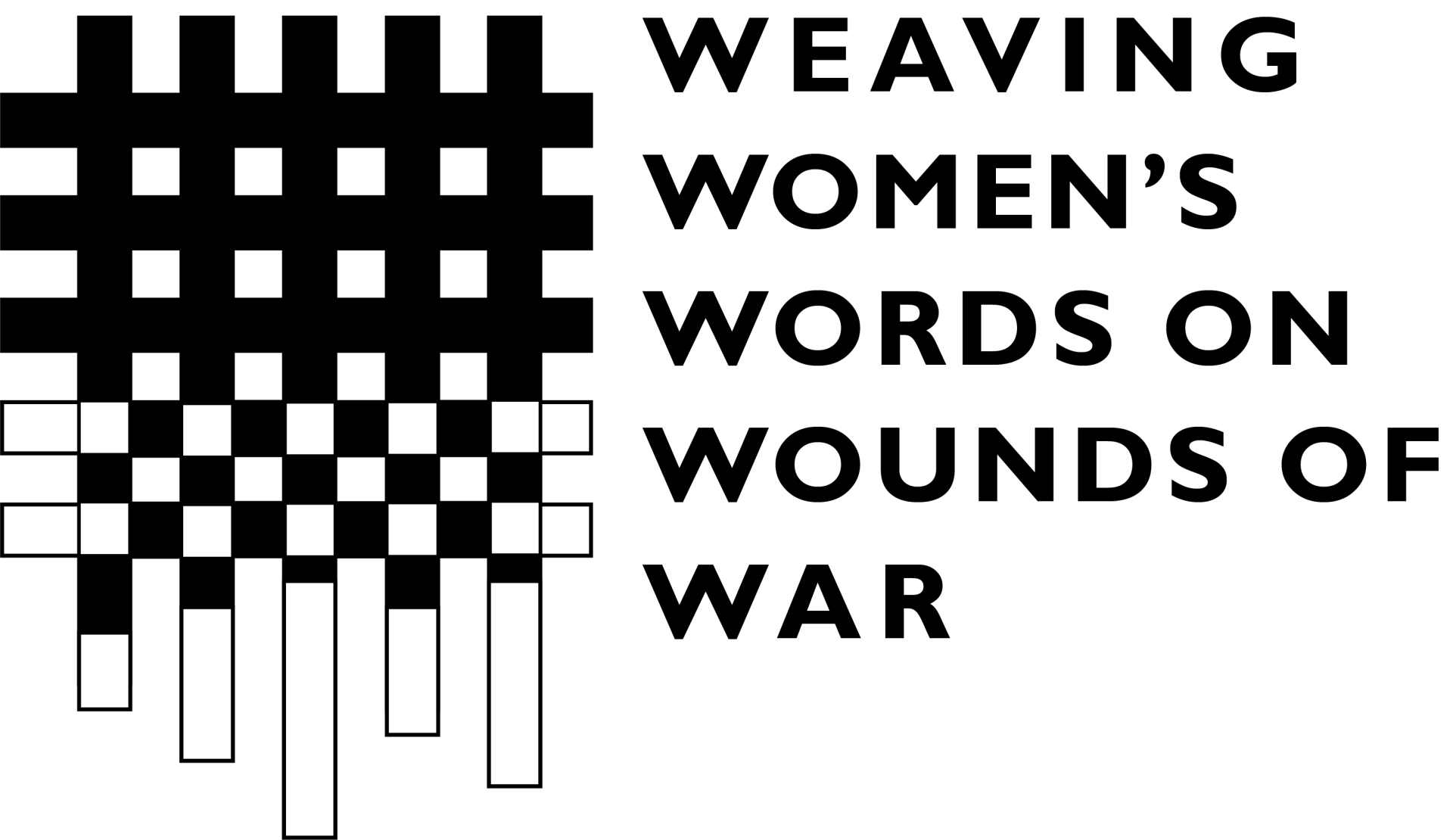
Women, war,
and death in Sulu:
Equanimity
Woman, war, and death in Sulu:
Equanimity
2022
Autobiographical recollection, embroidery on garments,
woodworking and installation of traditional Tausug
appliqued canopy (luhul)
Karl Castro (concept, concept development and artwork creation), Jatun Ajid, Merfa Jalilul and Dadang J. Isniran, Mercilyn Haylid, Nurisa Bakil and Nadia Hassan (autobiographical detail and emroidery), Fatmawati Salapuddin (luhul, research and analysis), Marian Pastor Roces (concept and concept development), Maria Fe P. Quiroga (curatorial assistance), Maricel Hilario-Patiño (project administration and anthropological insight), Santi Obcena and Chonalyn Alonzo (textile conservation), Terra Bomba (mounts), Arnold Diano, Archie Opeña, Jaypee Gotera, Agnes Nantiza and Noralen Johnson (installation)
THE WAR WAGED BY THE PHILIPPINE
ARMY IN THE 1970s AGAINST MUSLIM
SECESSIONIST FORCES OPERATING IN
THE ISLAMICIZED AREAS OF MINDANAO
HAD A PARTICULAR INFLECTION IN
THE SULU ARCHIPELAGO.
THIS IDEAL OF UNITY EMERGES FROM
A CULTIVATED SENSIBILITY THAT
KEEPS FAITH WITH PRE-ISLAMIC
AND ISLAMIC-ANIMIST RITUALS PRESIDING
OVER LIFE AND DEATH IN THE
SULU ARCHIPELAGO.
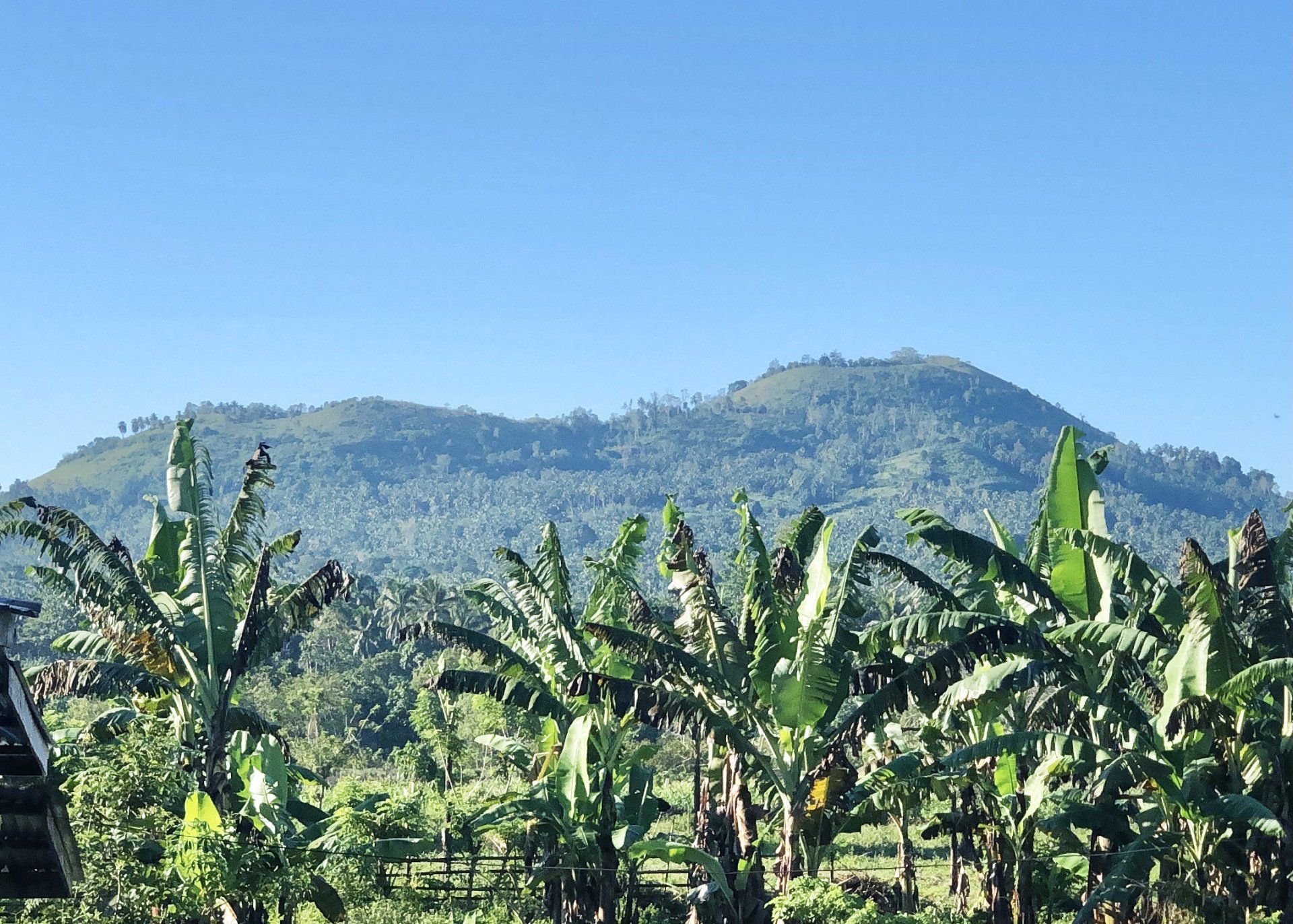
TALIPAO TOWN IN SULU.
RESEARCH PARTNER FATMAWATI SALAPUDDIN
INTERVIEWING NURISA BAKIL.
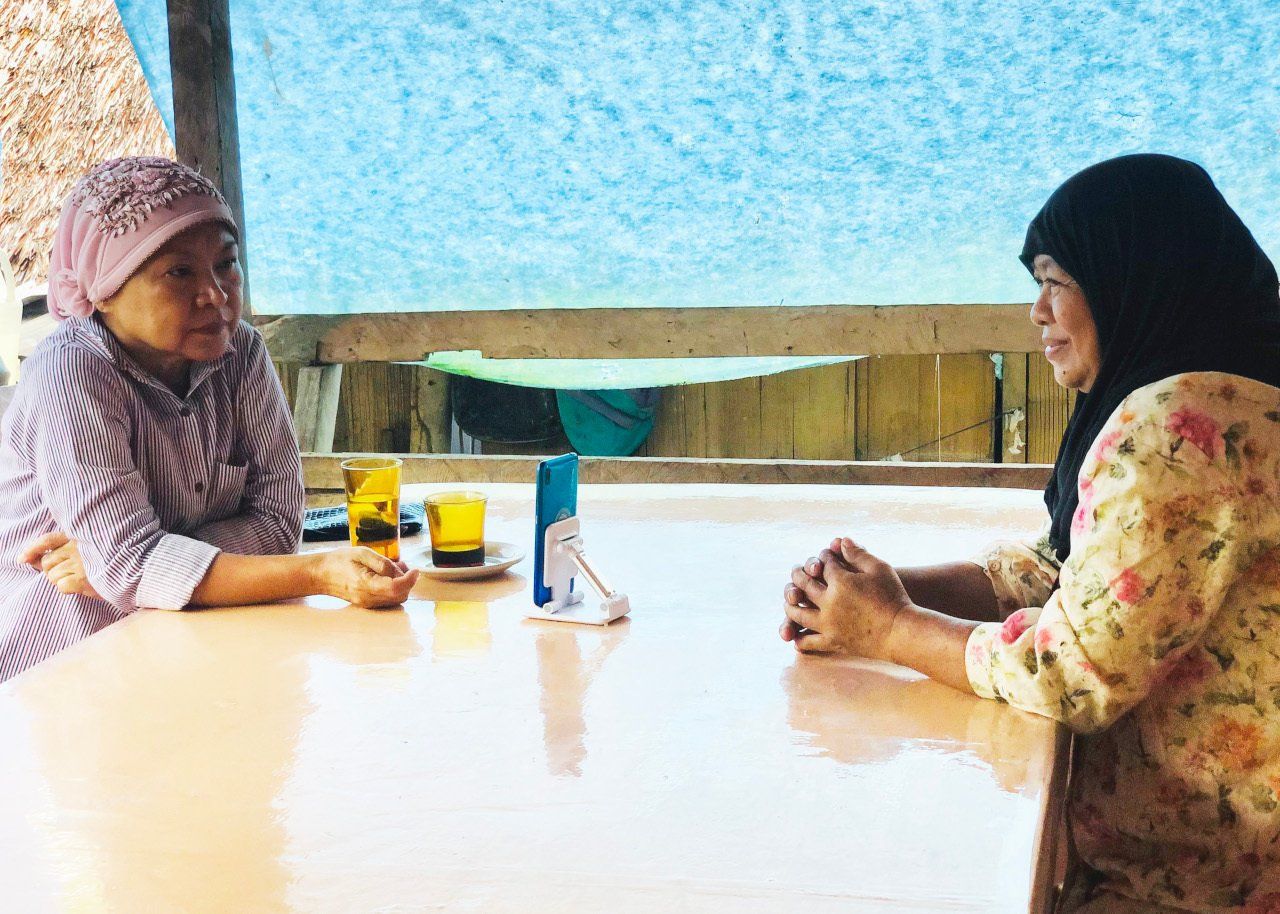
Voluntary entry into the Moro
National Liberation Front (MNLF),
a secessionist movement from
the Philippine Republic, meant partaking
in both the cultures of a modern war
and the old form of parang sabil.
This Tausug cultural form acknowledges
the clear possibility of death upon entry
into the ranks of combatants for honor,
homeland, or principle. Even those
who joined up to be medical assistants
accepted whatever dicta of fate.
With the acknowledgement,
the individual accepts death with
equanimity. And so do his or her family.
Falling during combat may mean that
traditional Islamic rites at death may not
be possible—this, too, is accepted with
peace of mind.
war,
and
death
in
Sulu:
Equanimity
Women,
Invisibilities
and seas: Grace
in the Sama islands
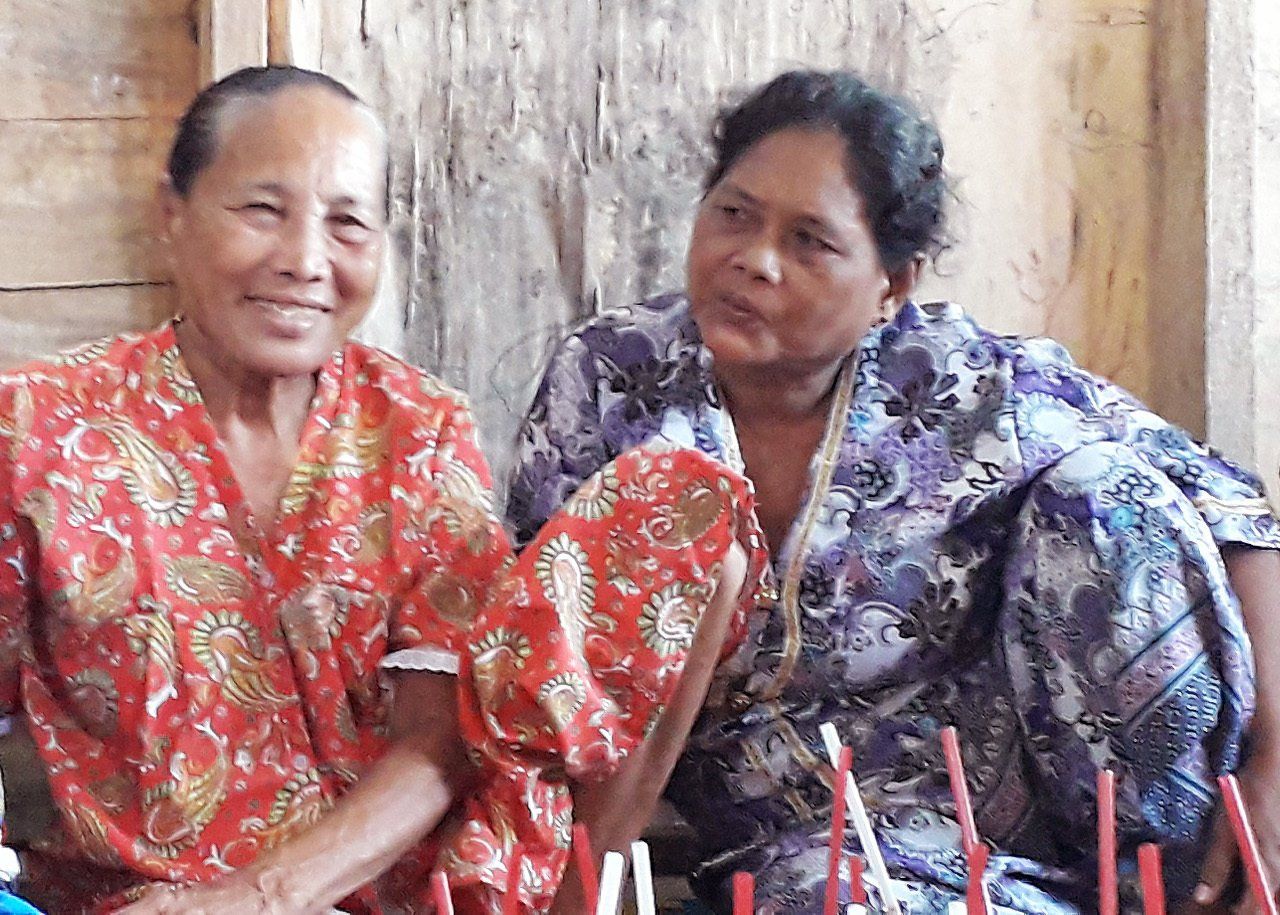
SAMA WOMEN AT A COMMUNITY MEETING WITH
THE RESEARCH TEAM IN MARIKI, ZAMBOANGA CITY.
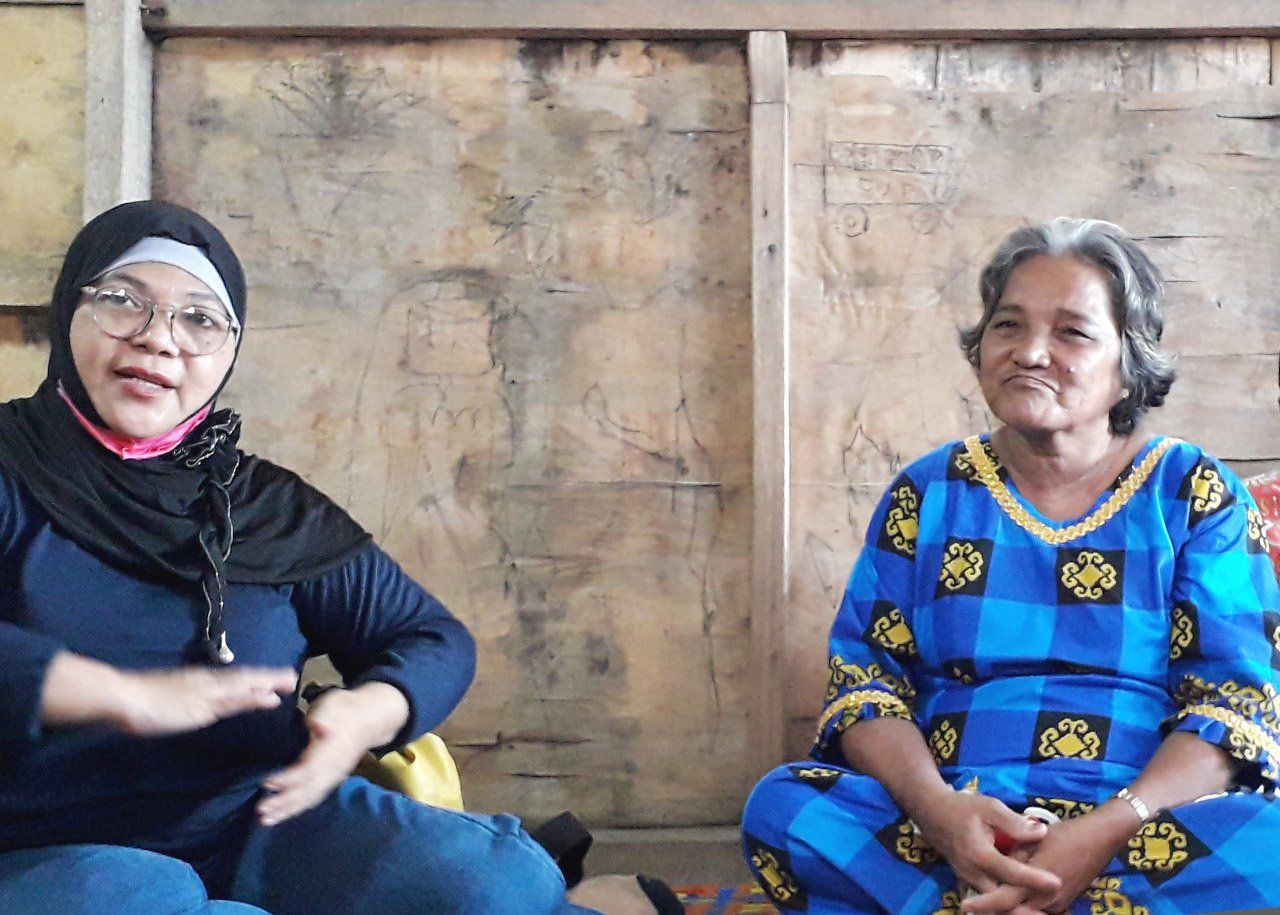
They also understand that the
dislocations experienced in Sulu
increased momentum during the
Martial Law period that brought
war to the archipelago.
THIS IDEAL OF UNITY EMERGES FROM A CULTIVATED SENSIBILITY THAT KEEPS FAITH WITH PRE-ISLAMIC AND ISLAMIC-ANIMIST RITUALS PRESIDING OVER LIFE AND DEATH
IN THE SULU ARCHIPELAGO.
The word grace describes
the will to life of the participating
men and women in this project,
who wish it understood that
their desire to uphold
the ritualized Samalan sea-oriented
life of the past is neither belligerent
nor divisive. They seek a "One Sulu"
inclusive of Tausug and
Sama peoples, despite
historical asymmetries of power
between the language groups.
THE PROJECT COLLABORATORS ARE ACUTELY AWARE THAT THE CONTINUED EXISTENCE OF
THESE RITUALS IS THREATENED
BY FUNDAMENTALIST STRAINS
OF ISLAM, MODERNISM, AND INDEED CHRISTIANITY.
These small polychromatic,
plain-woven mats
are used universally in the Sulu archipelago for the pause to pray,
many times a day,
as prescribed by Islam. It may be said that mats in general—traditionally used for the most mundane passages of daily life—also accompanied many Sulu peoples in major passages such as
birth and death,
and therefore the use in Islam
represents an intersection
between global and local realms.
Mats used for prayer
Tusug (but similar ones used by Sama speakers)
Plain weave
Dyed pandanus strips
Gift from Mucha Shim Quiling
THE WOMEN WHO BECAME SOLDIERS AND MEDICS,
AND WHO SHARED THEIR STORIES WITH THIS PROJECT,
ABANDONED THE FINE, POLYCHROMATIC HABUL TIYAHIAN
(EMBROIDERED TUBE SKIRT) AND DECORATED BAJU
(UPPER BODY GARMENT) OF TAUSUG CONVENTION.
THEY TOOK TO WEARING NONDESCRIPT CLOTHING
AS THEY WENT TO WAR.
Each contributing a
clothing set they used at
that time of war, the
women then
embroidered their names
on their clothes, and
gave, not just this
memento to the project,
but their trust that their
stories will be
understood as on-going.
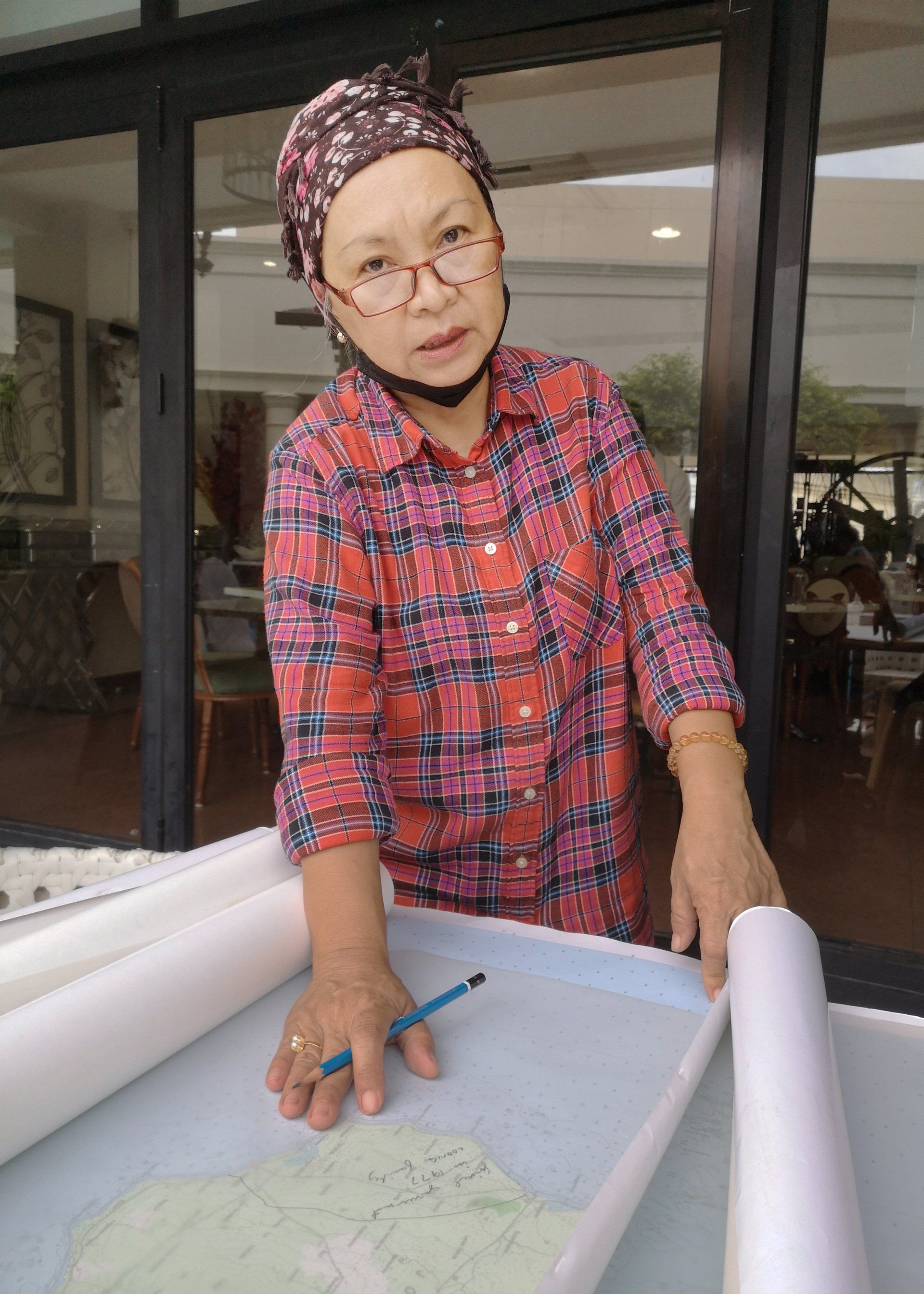
RESEARCH PARTNER FATMAWATI SALAPUDDIN
MARKING MAPS FOR RESEARCH.
OF SELF-DETERMINATION TODAY.
THEY CONTINUE TO UPHOLD THE PRINCIPLE
RESEARCH PARTNER FATMAWATI SALAPUDDIN
INTERVIEWING JATUN ATID.

THEIR DOUBLE COMMITMENT TO
MODERN NARRATIVE AND
LITERAL BATTLEGROUNDS, AND TO
THE OLDER FORM OF CONSOLIDATING HONOR,
IS REPRESENTED IN THIS EXHIBITION.
with the Tausug canopy with the
appliqued symbol of the Tree of Life.
Hovering in the vicinity of
the clothes of the time of war,
the canopy (or wall hanging) may also
symbolize, at least for this project
itself, the emanation of
a better life from an honorable death.
CONNER APAYAO
BALBALAN
BALENCIAGO MASS BASE
TOMIANGAN
NAPOCOR CAMP
NANENG MASS BASE
CAGALUAN MASS BASE
TANAP MASS BASE
MALUCUSOD MASS BASE
BASAO MASS BASE
BATONG BUHAY MASS BASE
MOUNT BINULUAN
HELD THE CORDILLERA
MASS PLENUM IN 1984
PLANNING OF SPLIT
MOUNT BINULUAN SIKUU'
MALLANGA
SUMADEL MASS BASE
PAY-ONG BANGAD
FULISONG BANGAD
BANGAD MASS BASE
TINGLAYAN
DANANAO MASS BASE.
MARKS BY JUANITA CHULSI AND
JUANITA D. CABABA
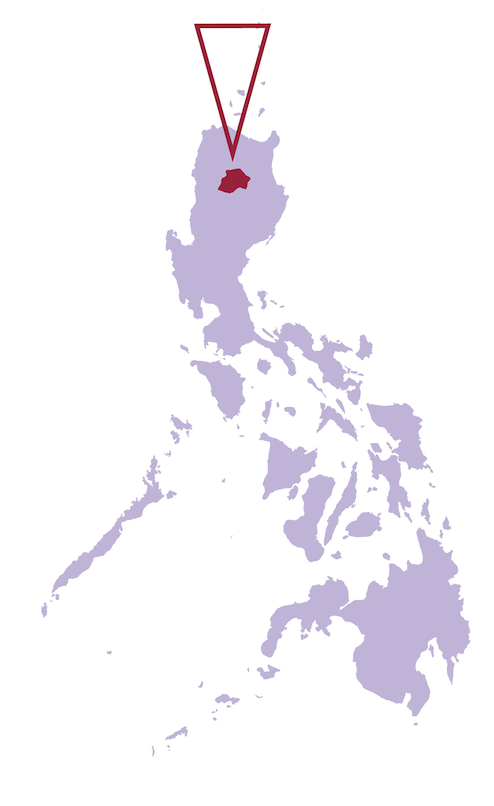
BITUAGAN
SADANGA
BELWANG MASS BASE
BUGNAY
BUGNAY GATE
MOUNTAIN BETWEEN
BASAO AND BUGNAY
BASAO
CHICO RIVER
NGIBAT
BUTBUT PROPER
LOCCONG
BUSCALAN
MOUNT CHUMANCHIL.
A
B
C
D
E
F
G
H
I
J
K
L
M
A
B
C
D
E
F
G
H
I
J
K
L
M
N
O
P
Q
R
S
T
MARKS BY TINA BALWEG,
CAROLYN GAMBOA AND
MANDING TAYAB
THIS MAP DETAILS LOCATIONS OF ACTIVITIES OF WOMEN
IN COMBAT UNITS OF THE 1970s MORO NATIONAL
LIBERATION FRONT (MNLF), THE SECOND ORGANIZATION
TO DECLARE A MOVE TO SECEDE FROM THE REPUBLIC
ON THE BASIS OF HISTORICAL WRONGS TO MUSLIM IN THE PHILIPPINES.
The personal maps of the four women who participated in this recollection project
are from their experiences as paramedics, which inevitable brought them into combat units.
They understood they were combatants. Today, all four believe they are still living out
their prolonged resistance to a State they believe has not given Muslim Filipinos their due.
Notwithstanding the creation of a Bangsamoro Autonomous Region in Muslim Mindanao,
the women are unconvinced. Their sense of historical injustice is not assuaged,
with particular recall of the Marcos period.
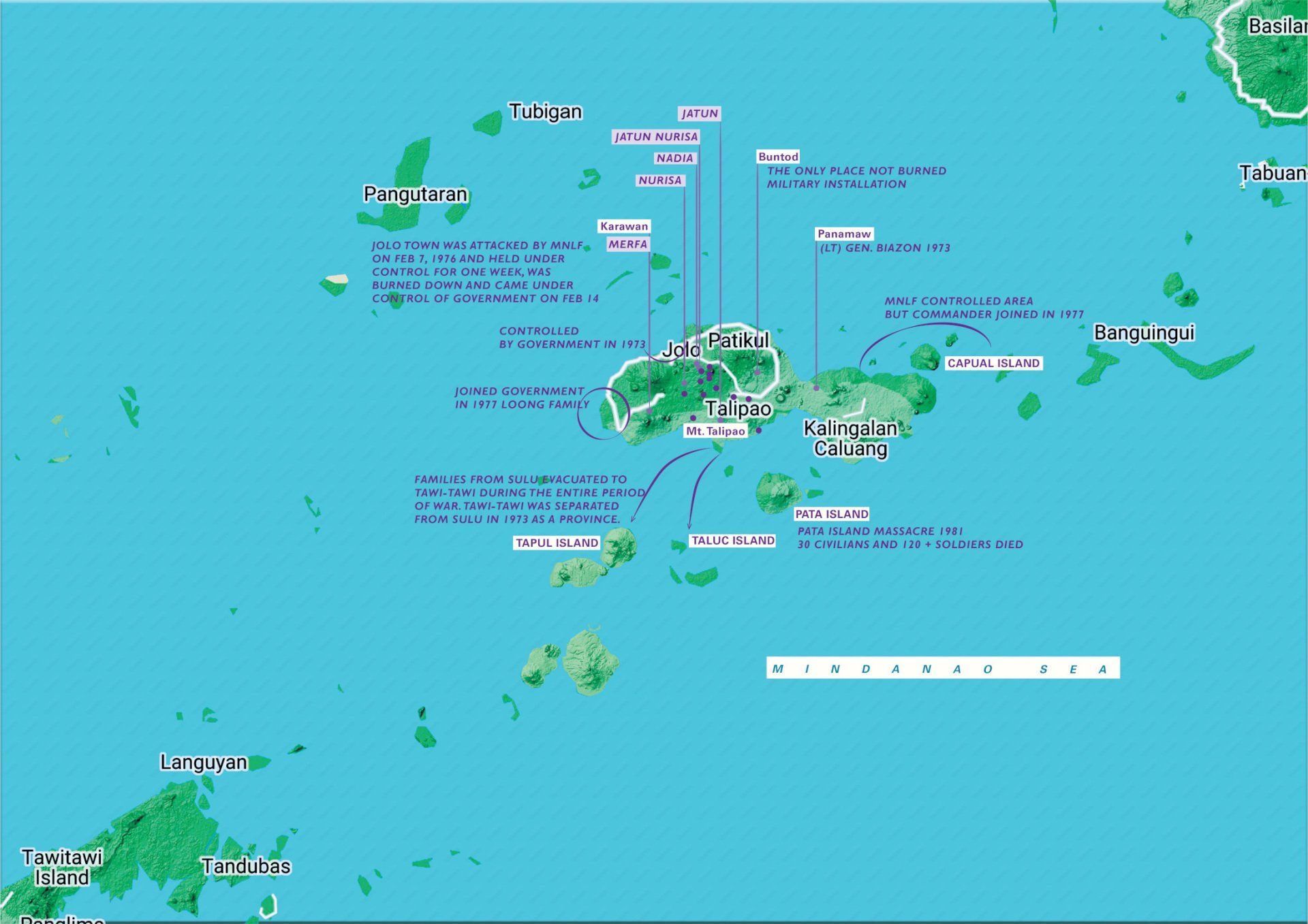

Jolo, Sulu
All Rights Reserved | Weaving Women's Voices
